You are using an out of date browser. It may not display this or other websites correctly.
You should upgrade or use an alternative browser.
You should upgrade or use an alternative browser.
Tirupathi Facts
- Thread starter ambes
- Start date
- Status
- Not open for further replies.
R
Ramacchandran
Guest
It is Subramanya Temple that has been converted in to Vaishnava Temple! The subramanya is Saligrama. There is a ASI report that quotes about this Subramanya. There were long fights at tirumala and Maratas looted many gold from temple, yes I am having full records of this.
sangom
0
Some more facts about Tirupati temple in the attached files pl.
Attachments
-
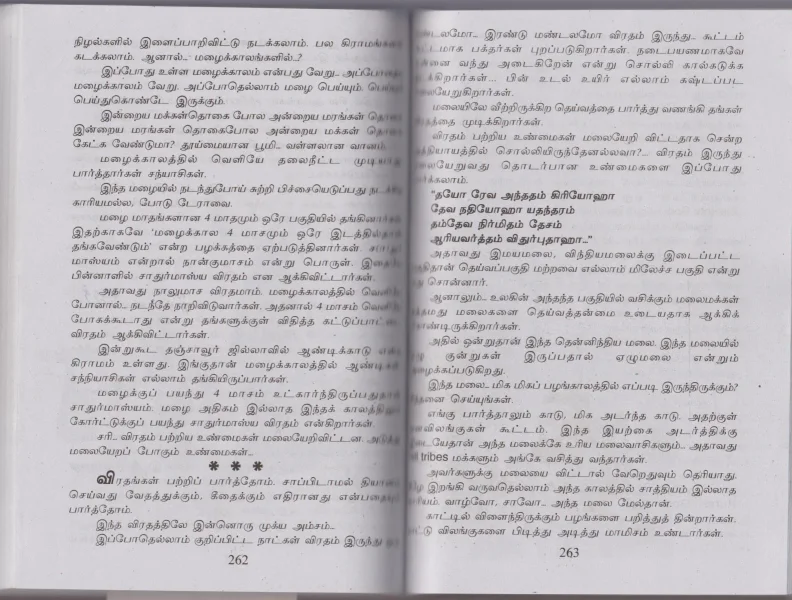 Tirupati~fact-01.webp275.9 KB · Views: 431
Tirupati~fact-01.webp275.9 KB · Views: 431 -
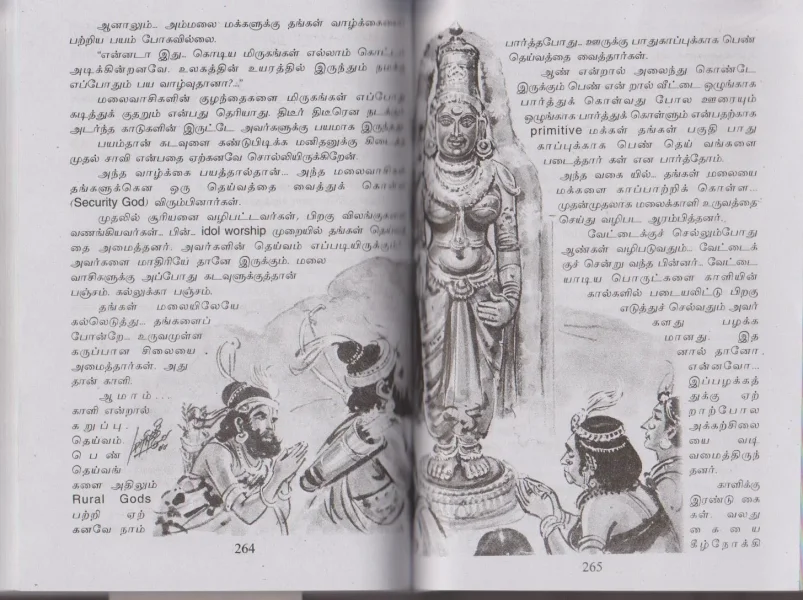 Tirupati~fact-02.webp328.6 KB · Views: 458
Tirupati~fact-02.webp328.6 KB · Views: 458 -
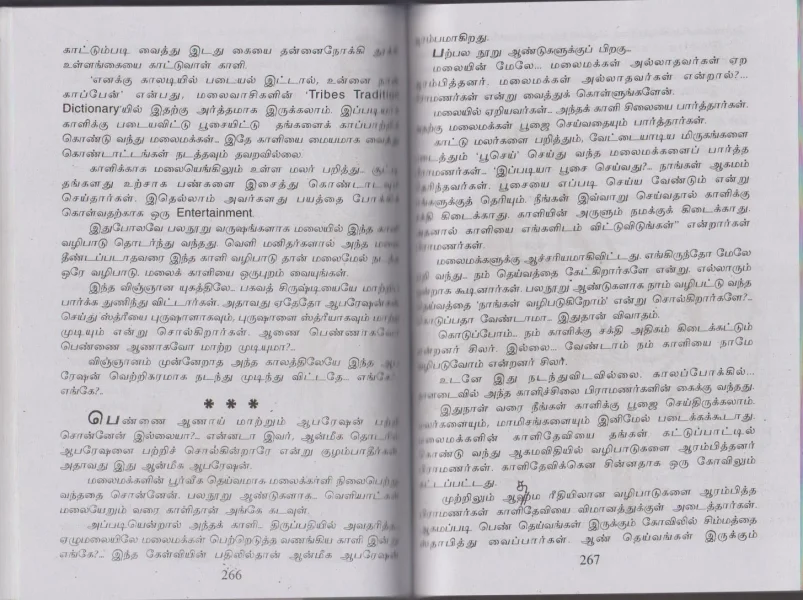 Tirupati~fact-03.webp286.5 KB · Views: 439
Tirupati~fact-03.webp286.5 KB · Views: 439 -
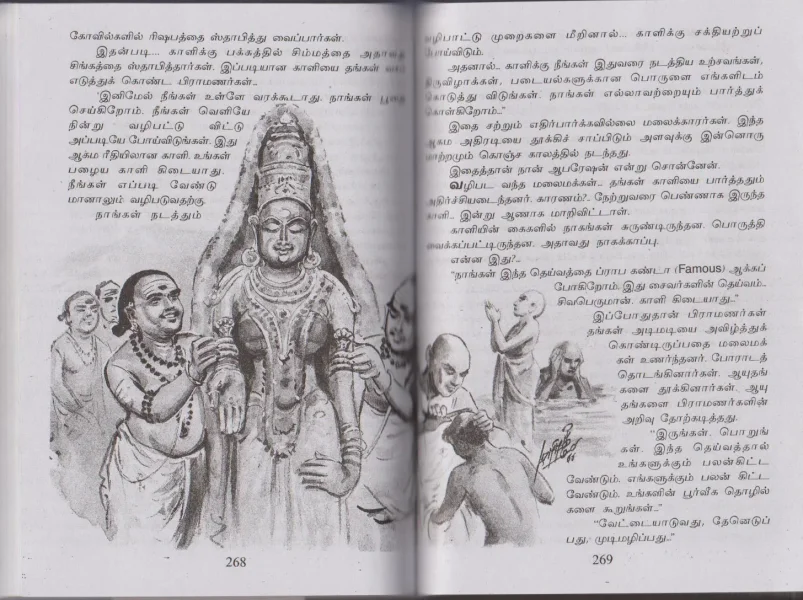 Tirupati~fact-04.webp346.3 KB · Views: 467
Tirupati~fact-04.webp346.3 KB · Views: 467 -
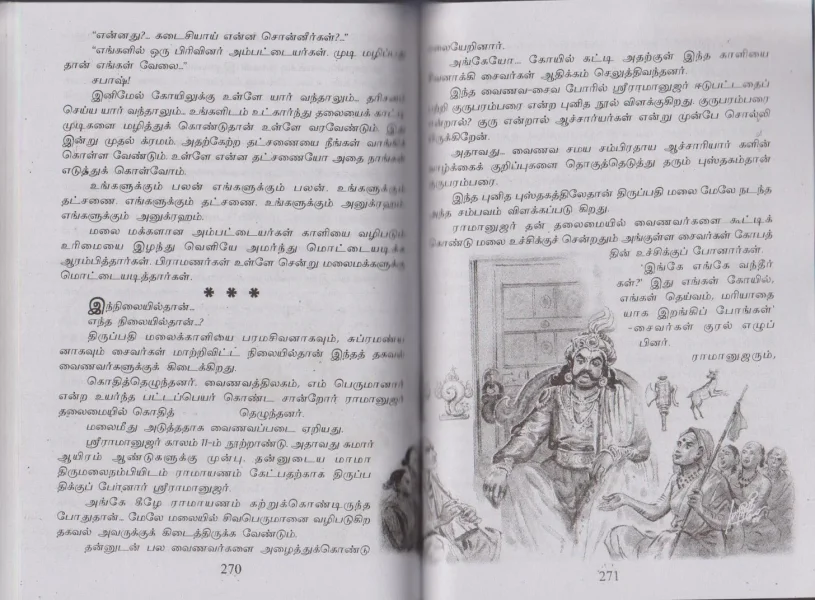 Tirupati~fact-05.webp299.7 KB · Views: 442
Tirupati~fact-05.webp299.7 KB · Views: 442 -
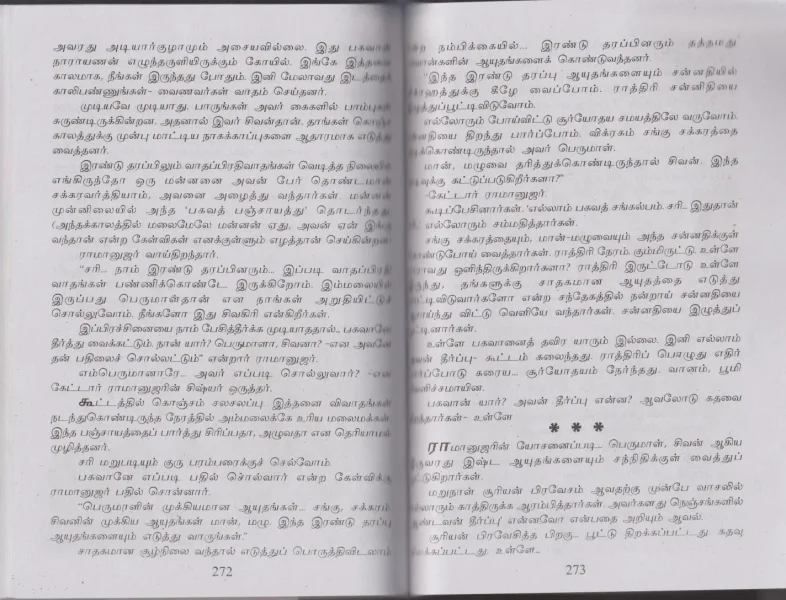 Tirupati~fact-06.webp255.3 KB · Views: 308
Tirupati~fact-06.webp255.3 KB · Views: 308 -
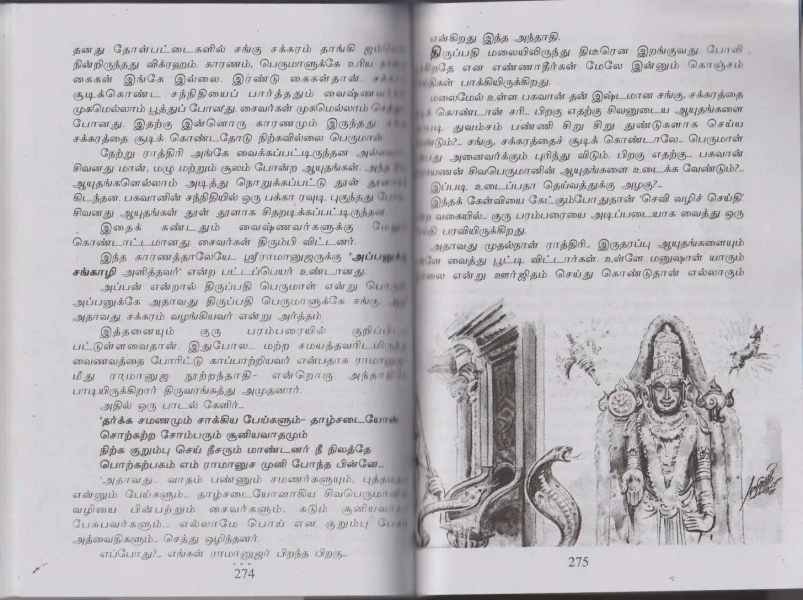 Tirupati~fact-07.webp307.5 KB · Views: 395
Tirupati~fact-07.webp307.5 KB · Views: 395 -
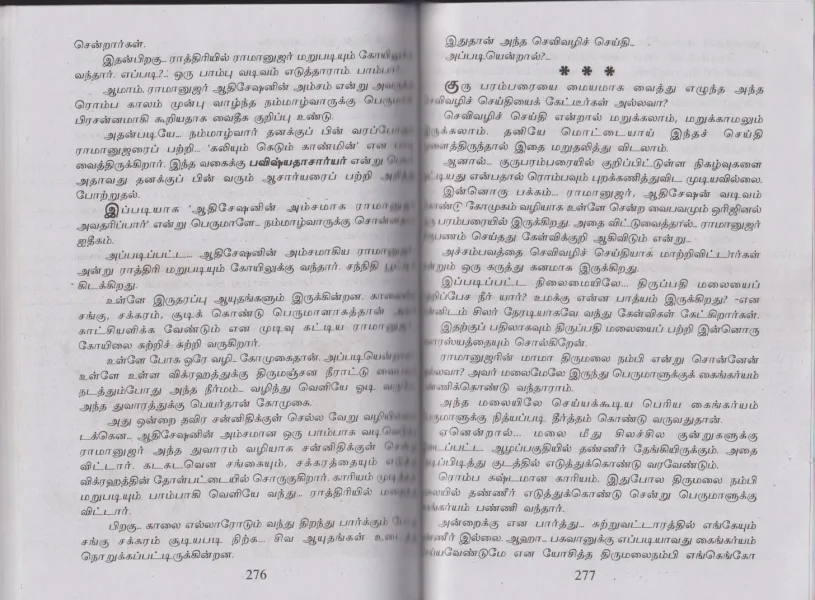 Tirupati~fact-08.webp285.2 KB · Views: 348
Tirupati~fact-08.webp285.2 KB · Views: 348 -
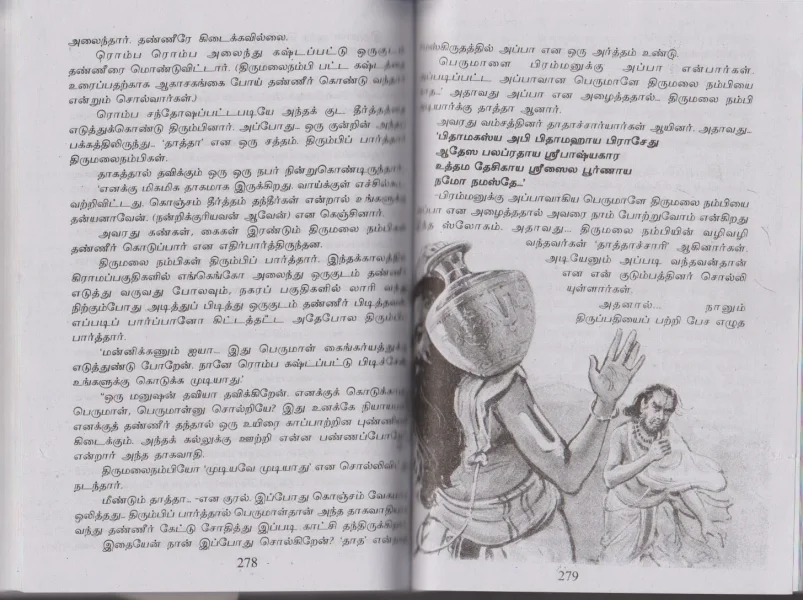 Tirupati~fact-09.webp313.4 KB · Views: 294
Tirupati~fact-09.webp313.4 KB · Views: 294 -
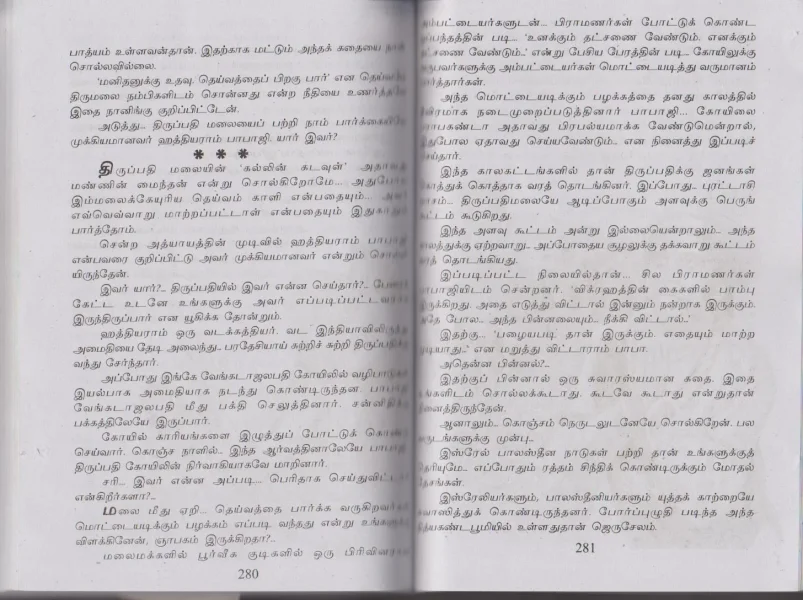 Tirupati~fact-10.webp252.7 KB · Views: 331
Tirupati~fact-10.webp252.7 KB · Views: 331 -
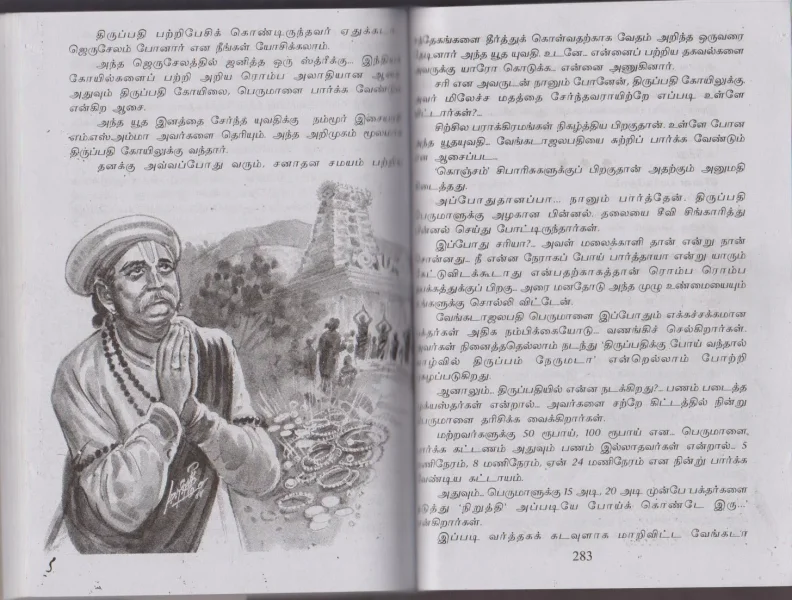 Tirupati~fact-11.webp339.7 KB · Views: 426
Tirupati~fact-11.webp339.7 KB · Views: 426 -
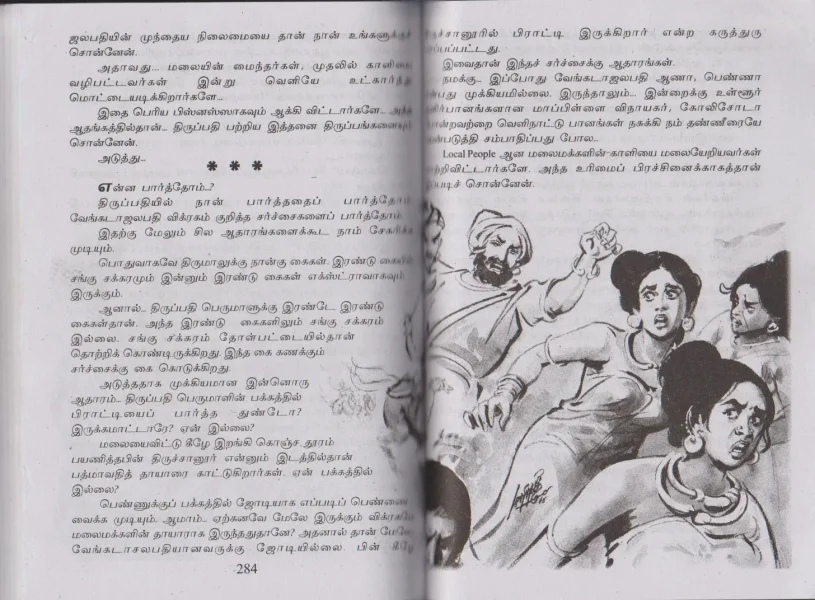 Tirupati~fact-12.webp296.2 KB · Views: 400
Tirupati~fact-12.webp296.2 KB · Views: 400
Unfortunately Shri Ambes and Shri Sangom have posted material in Tamil. Please can you provide a short gist in English regarding the content of your attachments. Many thanks.
R
Ramacchandran
Guest
We can not judge that the Avtars as we are not risis or fortune tellers or the person who knows all the three, past, present and future. We are just following the stories told by our grand father, grand mother which we just follow them.
To be frank since we tell stories the Chemistry of Ayurveda and Siddha Medicines were hidden which resulted in banning of Indian Ayur Veda and Siddha Medicines by Europe.
The diseases were called devils and the herbs were called astras the herbal juices were called Amruthas.
Doctors are worshiped as Gods.
The land for Brahmins were given to plant the herbal plants and all the medicines were given to the public at free of cost. Because of these stories Westerners think Ayurveda and Siddha Medicines are black magic medicine by Hindus.
To be frank since we tell stories the Chemistry of Ayurveda and Siddha Medicines were hidden which resulted in banning of Indian Ayur Veda and Siddha Medicines by Europe.
The diseases were called devils and the herbs were called astras the herbal juices were called Amruthas.
Doctors are worshiped as Gods.
The land for Brahmins were given to plant the herbal plants and all the medicines were given to the public at free of cost. Because of these stories Westerners think Ayurveda and Siddha Medicines are black magic medicine by Hindus.
sangom
0
Unfortunately Shri Ambes and Shri Sangom have posted material in Tamil. Please can you provide a short gist in English regarding the content of your attachments. Many thanks.
Smt. HH,
The gist of what Shri Agnihotram Ramanuja Tatachariar, the author of the book "Hindu matam engE pOkiRatu?" says is as under:
The hill tribes who lived once upon a time in the Ezhumalai hills had erected a Kali idol as their protective deity and used to worship that idol with flowers and the meat of hunted animals as "naivEdyam". He says the word "pooSai" came from "poo Sei" or 'do flower'. As time elapsed, some Brahmans trecked to the top of the Tirumalai hill, found the hill tribes worshipping Kali and said, "This is not the way to do pooja for Kali; we know well what to do and how to do it according to the Agamas; so leave it to us, we will perform the pooja and that will make Kali much more powerful and all of us will get more benefits as a result thereof." The Brahmans' request surprised the tribes and they were not decided whether or not to accede to the Brahmans' suggestion. But, over a period of time, Brahmans got control over the place of worship, installed a lion idol near the idol of Kali, built a "vimaana" - all according to Agama - and then forbade the tribals from entering the precincts and making meat offerings. The tribals had to stand outside the temple, bow/prostrate and go. The Brahmans cautioned the tribals that it is no longer their method of pooja, but the Agama type of Brahmins, and so, if any of the Brahman-made rule is violated, Kali will lose all her powers. The Brahmans therefore connived to get all supplies for the temple brought/supplied by the tribals (free, of course).
Then the priests decided to change the deity's appearance to that of Siva and when the tribals enquired, the Brahmans replied that it will thenceforth be a Siva temple and they (Brahmans) would do propaganda for it. The tribals became aware of the cunning of the Brahmans and started fighting, but the Brahmans' acute shrewdness came to help them. They convinced the tribals that all of them can benefit if the temple becomes famous and enquired what job/s they can do. The tribals replied that they were hunters, honey-gathering and some of them do barber's work. So the Brahmans said all people visiting the temple must thenceforth shave their head clean and that duty will be of the tribals. "You take your fees for the shaving, we will take our fees inside the temple.", they agreed. Tataachaariaar sarcastically remarks, "The tribals shaved the devotees outside the temple, the Brahmans entered the hill and shaved the tribals!"
From Siva, the deity was changed to Subramanya at some point of time and flourished. News of these developments then reached the Vaishnavas who got enraged. They gathered under the leadership of Ramanuja who had gone to his uncle's house in lower tirupathi for learning Ramayana. He led other Vaishnavas uphill and then the Saiva priests also got angry. They tried to drive away the Vaishnavaites, but the latter stuck to their claim of that being a Vishnu's shrine. At the end of it Ramanuja said that each group will place the weapons of their respective gods (conch - Sankhu - and discus - cakram - of Vishnu, dear - maan - and battle axe - mazhu - of Siva), close the door at night and come back next morning to see which weapons adornn the idol and accept it as god's decision. Next morning when the temple order was opened, they found the idol sporting conch and discus on its shoulders - because the idol had only two hands; the weapons of Siva were pulverized. the issue was settled. Ramanuja got the title "appanukku cankaazhi aLittavan" (one who gave conch and discus to the Lord). This much is written in the "guru parampara".
The greatness of Ramanuja is lauded in one verse of the "rAmAnuja nUttantAti" (hundred linked verses in praise of rAmAnuja - linked verses means one starts with the ending word of the previous one.) as under:
"the debating Jains, ghosts-like Buddhists, Saivas who adore Siva with long hair, those who talk of "SUnya", the advaitins who joke that everything is unreal... all of these got decimated after our rAmAnuja took birth."
To the question whether it was befitting god to pulverize the weapons of Siva when his preference alone would have been sufficient indication for all to follow his divine will, the answer comes by "karnaparampara" or by word-of-mouth route. according to that rAmAnuja being an avatAr himself of AdiSEsha, (such a divine indication is said to have been obtained by nammAzhvAr who lived long time before rAmAnuja) took the shape of a snake, entered the closed sanctum at the dead of night through the drain for the "teertha" water to flow out and fitted the Vishnu's weapons on the shoulders of the idol, again takes the snake's form and comes out of the sanctum, (innocence personified! - sangom).
This hearsay is believable because it is vitally linked to what is stated in the "guruparampara".
Shri Tatachariar narrates a legend in which Tirumalai Nambi, Ramanuja's uncle, carries water in a pot uphill for pooja and a Brahman asks a little water to quench his thirst. Nambi refuses but the Brahman again calls him "tAtta" (grandfather) and when Nambi looks back, Perumal shows his real form, etc., which earned for the descendants of Tirumalai Nambi the honorific "tATTAchAriAr" of which the author is one and so he has a duty to write about Tirumalai Temple and Perumal.
Tatachariar mentions an attempt by some Brahmans to remove the snakes visible in the hands of the idol as well as the pleated hair (pinnal) behind the idol. The then administrator, one Hathiaram Baba disallowed such alterations. The author also tells that he has personally seen this pleated hair (of the original Kali) in the idol.
He laments the utter commercialization of the temple and says that whatever he has disclosed was due to his concern about this crass commercialization.
N
Nara
Guest
Dear Shri Samgom sir,
The true origin of Thiruvengadam temple is a puzzle. Serious archeological and anthropological research is needed to make a firm determination, but there is more chance for the proverbial hell to freeze over than this happening.
However, I feel Sri ART swami's presentation, whom I admire as a reform minded person, is seriously flawed. Please read on.
Starting with the time just before Ramanuja, the Guru Parampara Prabhavam text states Ramanuja's own maternal uncle, Periya Thirumalai Nambi, whom you refer citing Sri ART swami, a devout SV, a prominent shishya of Alavandhar the imminent SV Acharya at that time, was doing kainkaryam to Thiruvengadam temple. There is no way he would have done that if it was a Shiva temple at that time.
Next, all Azhvars starting from the earliest of the 12, except Thondaradippodi who sang only about Sri Rangam and not any other temple, sang in praise of Thirvengadavan as Sriman Narayana only. I give below a list of pasuram counts by Azhvars.
If we go further back, to the time of Ilango, we see that even at that time Thiruvengadam was a Perumal temple. In Silappathikaram, Ilango starts Chapter #8 (வேனிற் காதை) of the first canto PugAr kANdam (புகார் காண்டம்) with a brief description of the boundary of Tamil country, which to him was from the hill of Vishnu to the sea of Ambal.
Given such abundance of evidence I am skeptical of the story from the Guru Parampara Prabhavam (GPP) about closing the door and keeping a vigil all night that Sri ART swami cites. Ramanuja could have cited all these textual evidences and carried the day. So I feel this totally unbelievable story is completely made up, not a true one with obvious embellishments, and included in the GPP text, probably to inflate Ramanuja's greatness, or, probably to push back some new claims from Shivites.
The fact is, this story in GPP has only fueled speculation and has served to keep such dubious claims alive to the present time. No less an eminent personality than Sankarachariyar Chandrasekara Swamigal wrote an article in Kalki quoting Peyazhvar's மூன்றாம் நூற்றந்தாதி verse #63 (தாழ்சடையும்) -- BTW, MS has rendered this pasuram as a virththam to one of her songs -- to argue Thiruvengadam is in reality a Shiva temple turned into Viashnava temple.
This pasruam seems to indicate that both Shiva and Vishnu forms are fitting to what he says is his lord of Thiruvengadam. But, such claims fall flat when all the textual evidence from Silappathikaram to the plethora of Azhvar pasurms are taken into account. Interestingly, Ilango, a Jain, who can be considered uninterested in Shaiva v. Vaishnava fights leaves no doubt that Thiruvengadam was a Vaishnava temple in his time.
What it was before Ilango's time is hard to say. The history further back is quite sketchy, nothing can be said definitively. I once read an article in which the author made a case, citing architectural details and sculptures that it was originally a Jain temple. I found his arguments persuasive, or, at least worth taking seriously. Here is a blog that makes this argument also, but needs to be taken with a pinch of salt. If it indeed was a Jain temple what an irony it would be that a Jain, Ilango, wrote about the temple in glowing terms as a Vaishnava temple.
The true origin of Thiruvengadam temple is a puzzle. Serious archeological and anthropological research is needed to make a firm determination, but there is more chance for the proverbial hell to freeze over than this happening.
However, I feel Sri ART swami's presentation, whom I admire as a reform minded person, is seriously flawed. Please read on.
Starting with the time just before Ramanuja, the Guru Parampara Prabhavam text states Ramanuja's own maternal uncle, Periya Thirumalai Nambi, whom you refer citing Sri ART swami, a devout SV, a prominent shishya of Alavandhar the imminent SV Acharya at that time, was doing kainkaryam to Thiruvengadam temple. There is no way he would have done that if it was a Shiva temple at that time.
Next, all Azhvars starting from the earliest of the 12, except Thondaradippodi who sang only about Sri Rangam and not any other temple, sang in praise of Thirvengadavan as Sriman Narayana only. I give below a list of pasuram counts by Azhvars.
Poigaiazhvar - 10
Boothathazhvar - 9
Peyazhvar - 19
Periazhvar - 7
Andal - 16
Thruppaanazhvar - 2
Kulasekara perumal - 11
Thirumazhisaipiraan - 14
Nammaazhvar - 52
Thirumangai mannan - 62
Taken in total, with 202 pasurams that can be roughly dated from 7 to 9th century CE, there can be no doubt that during the time of the Azhvars, Thiruvengadam was a Perumal temple.Boothathazhvar - 9
Peyazhvar - 19
Periazhvar - 7
Andal - 16
Thruppaanazhvar - 2
Kulasekara perumal - 11
Thirumazhisaipiraan - 14
Nammaazhvar - 52
Thirumangai mannan - 62
If we go further back, to the time of Ilango, we see that even at that time Thiruvengadam was a Perumal temple. In Silappathikaram, Ilango starts Chapter #8 (வேனிற் காதை) of the first canto PugAr kANdam (புகார் காண்டம்) with a brief description of the boundary of Tamil country, which to him was from the hill of Vishnu to the sea of Ambal.
"நெடியோன் குன்றமும், தொடியாள் பௌவமும் தமிழ்வரம்பு அறுத்த..."
In the second canto (மதுரை காண்டம்), Chapter 11 (காடு காண் காதை) (11 is a running number, it is the first chapter of second canto), Ilango narrates a vision of a Brahmin to have darshan of Srirangam and Thiruvengadam. I give below the Thiruvengadam part starting in verse #40:
"வீங்குநீர் அருவி வேங்கடம் என்னும்
ஓங்குயர் மலையத்து உச்சி மீமிசை
விரிகதிர் ஞாயிறும் திங்களும் விளங்கி
இருமங்கு ஓங்கிய இடைநிலைத் தானத்து
மின்னுக் கோடி யுடுத்து, விளங்குவிற் பூண்டு
நன்னிற மேகம் நின்றது போலப்
பகையணங்கு ஆழியும், பால் வெண் சங்கமும்
தகைபெறு தாமரைக் கையின் ஏந்தி
நலங்கிளர் ஆரம் மார்பிற் பூண்டு
பொலம் பூ ஆடையின் பொலிந்து தோண்றிய
செங்கண் நெடியோன் நின்ற வண்ணமும்..."
Note that Ilango describes the nediyOn of Thiruvengadam as wearing Chakaram (ஆழி) and Shangu. ஓங்குயர் மலையத்து உச்சி மீமிசை
விரிகதிர் ஞாயிறும் திங்களும் விளங்கி
இருமங்கு ஓங்கிய இடைநிலைத் தானத்து
மின்னுக் கோடி யுடுத்து, விளங்குவிற் பூண்டு
நன்னிற மேகம் நின்றது போலப்
பகையணங்கு ஆழியும், பால் வெண் சங்கமும்
தகைபெறு தாமரைக் கையின் ஏந்தி
நலங்கிளர் ஆரம் மார்பிற் பூண்டு
பொலம் பூ ஆடையின் பொலிந்து தோண்றிய
செங்கண் நெடியோன் நின்ற வண்ணமும்..."
Given such abundance of evidence I am skeptical of the story from the Guru Parampara Prabhavam (GPP) about closing the door and keeping a vigil all night that Sri ART swami cites. Ramanuja could have cited all these textual evidences and carried the day. So I feel this totally unbelievable story is completely made up, not a true one with obvious embellishments, and included in the GPP text, probably to inflate Ramanuja's greatness, or, probably to push back some new claims from Shivites.
The fact is, this story in GPP has only fueled speculation and has served to keep such dubious claims alive to the present time. No less an eminent personality than Sankarachariyar Chandrasekara Swamigal wrote an article in Kalki quoting Peyazhvar's மூன்றாம் நூற்றந்தாதி verse #63 (தாழ்சடையும்) -- BTW, MS has rendered this pasuram as a virththam to one of her songs -- to argue Thiruvengadam is in reality a Shiva temple turned into Viashnava temple.
This pasruam seems to indicate that both Shiva and Vishnu forms are fitting to what he says is his lord of Thiruvengadam. But, such claims fall flat when all the textual evidence from Silappathikaram to the plethora of Azhvar pasurms are taken into account. Interestingly, Ilango, a Jain, who can be considered uninterested in Shaiva v. Vaishnava fights leaves no doubt that Thiruvengadam was a Vaishnava temple in his time.
What it was before Ilango's time is hard to say. The history further back is quite sketchy, nothing can be said definitively. I once read an article in which the author made a case, citing architectural details and sculptures that it was originally a Jain temple. I found his arguments persuasive, or, at least worth taking seriously. Here is a blog that makes this argument also, but needs to be taken with a pinch of salt. If it indeed was a Jain temple what an irony it would be that a Jain, Ilango, wrote about the temple in glowing terms as a Vaishnava temple.
This verse #99 is as follows:The greatness of Ramanuja is lauded in one verse of the "rAmAnuja nUttantAti" (hundred linked verses in praise of rAmAnuja - linked verses means one starts with the ending word of the previous one.) as under:
"the debating Jains, ghosts-like Buddhists, Saivas who adore Siva with long hair, those who talk of "SUnya", the advaitins who joke that everything is unreal... all of these got decimated after our rAmAnuja took birth."
தற்கச் சமணரும் சாக்கியப் பேய்களும், தாழ்சடையோன்
சொற்கற்ற சோம்பரும், சூனிய வாதரும், நான்மறையும்
நிற்கக் குறும்புசெய் நீசரும் மாண்டனர், நீள்நிலத்தே
பொற்கற்பகம் எம் இராமானுச முனி போந்தபின்னே
Cheers!சொற்கற்ற சோம்பரும், சூனிய வாதரும், நான்மறையும்
நிற்கக் குறும்புசெய் நீசரும் மாண்டனர், நீள்நிலத்தே
பொற்கற்பகம் எம் இராமானுச முனி போந்தபின்னே
Last edited by a moderator:
R
Ramacchandran
Guest
In Nalayira Dhivya Prabandham they mention "Ippadium Sollalam, may be or may not be.
In 1890-91 there was a case in Madras Court., where the Court asked the Vaishnavaites to bring the parent palm leaves of Nalaayira Dhivya Prapandham. This is a land case where a jeer claimed right on a Sivan temple property. This Property was taken by English for forest. But the jeer claimed the right over the property. But English refused and matter was taken to court. The Jeer showed the Palm leaves manuscript written at Triplicane in 1890. The court asked them to produce the Parent deed. The vaishnavaites first refused and latter said it was eaten by white ants. The court asked them to bring the Palm leaves. But Vaishnavites could not produce!
But later stage I found the original Nalayira Divya Prabandham at a library at Adyar and read.
On those days Vaishnavites hated Saivas and use to say "Madha Yaanai Thurathinnalum Mahesanai Nadaeen."
They say they are superior to all, and refused to give an equal seat to Madhvas who also worshiped Vishnu. The Madhva Mithran published in 1900 quotes a lot.
In 1890-91 there was a case in Madras Court., where the Court asked the Vaishnavaites to bring the parent palm leaves of Nalaayira Dhivya Prapandham. This is a land case where a jeer claimed right on a Sivan temple property. This Property was taken by English for forest. But the jeer claimed the right over the property. But English refused and matter was taken to court. The Jeer showed the Palm leaves manuscript written at Triplicane in 1890. The court asked them to produce the Parent deed. The vaishnavaites first refused and latter said it was eaten by white ants. The court asked them to bring the Palm leaves. But Vaishnavites could not produce!
But later stage I found the original Nalayira Divya Prabandham at a library at Adyar and read.
On those days Vaishnavites hated Saivas and use to say "Madha Yaanai Thurathinnalum Mahesanai Nadaeen."
They say they are superior to all, and refused to give an equal seat to Madhvas who also worshiped Vishnu. The Madhva Mithran published in 1900 quotes a lot.
sangom
0
Dear Shri Nara,
First let me make it clear that i don't hold any brief for any opinion about what the Tirupati idol represents. I feel that if, as ART says, it has been changed from its original Kali form to siva to Subrahmanya and then to Venkatesa, and people have been visiting the temple, that itself will show that the religious faith is not related to what murthy is worshipped.
I give below some more materials regarding the Tirupati Temple for your valued comments especially the references to Vaishnava texts at item 15 below. Please also see the attached pdf file also: this has been in the internet for long and looks persuasive to me.
There is one stotra by name subrahmaṇya karṇāmṛta by one Shri Gopalakrishna Kavi (Mahabhashyam Gopalakrishna Sastrikal) who was a 'guru bhai' (classmate) of Sadasiva Brahmendra (17th. - 18th. century). In this stotra verse 73 is as under:
शॆषाद्रीश्वर मौलि कॆलिसदना भाषाधिदॆव्युल्लसद्-
भाषा भूतगणामरारि परिषद्द्वॆषा परा दॆवता ।
ऎषास्तां मम मानसे शिव शिवॊन्मॆषा तुराषाड्भवद्
यॊषालिङ्गित विग्रहा प्रतिदिनं तॊषाय भूषा श्रुतॆः ॥
śeṣādrīśvara mauli kelisadanā bhāṣādhidevyullasad-
bhāṣā bhūtagaṇāmarāri pariṣaddveṣā parā devatā |
eṣāstāṃ mama mānase śiva śivonmeṣā turāṣāḍbhavad
yoṣāliṅgita vigrahā pratidinaṃ toṣāya bhūṣā śruteḥ ||
The reference to Lord Subrahmanya as "śeṣādrīśvara mauli kelisadanā" (one whose playground is the top of śeṣādri and who is the lord of it) has been interpreted to mean that at some point of time the Tirupati idol ought to have been worshipped as Subrahmanya. In support of this conclusion, the following arguments have been given in a book *:-
1. Normally Vishnu temples are not found atop hills or mountains whereas ancient Tamizh tribal culture was to build Murugan temples on top of hills/mounatins, which is based on a general tribal belief of the supernatural beings "living above"; so they should be on the top points available to man.
2. The temple tank invariably gets a name linked to the presding deity; e.g.,"padmatīrtham
" in anantaśayanam (Trivandrum), "pottaamaraikkuLam" in Kudanthai, etc. In Tirupathi it is called "Swami PushkariNee", and "swami", swaminathan, etc., denote Subrahmanya.
3. Vamana Purana states that Skanda did tapas in venkataachalam as ordered by Siva.
4. The Tirupathi idol does not have conch and discus etched or built into it. It has only two arms and the Sankhu and Chakram are simply placed on the two shoulders. The arms proper carry snake, flowing hair, which is attributable to Muruga and not Vishnu.
5. Bilva is used for worship in Tirupathi. This is not done in other Vaishnava temples.
6. Instead of Thursdays and Saturdays which are special for Vishnu, thirumanjanam is done on Fridays in Tirupathi; Fridays are considered special for Devi and Murugan.
7. Unlike other Vaishnava temples, The god and goddess are not found in the same temple.
8. Venkatesa sahasranaama has one name "subrahmanyaaya nama:" and the name venkatasubramanyan has been in use from early times.
9. Inside the innermost precincts of the Tirupathi temple we find only simha (lion) idols and not garuda or hanumaan.
10. North Indians have known this temple as "Balaji" and the word "baala" denotes subrahmanya and not Vishnu who is not described as a son in any scripture.
11. vishnu idol with nAgAbharaNa or jaTS is not found anywhere else.
12. The conduct of Brahmotsava during Saaradaa navaratri denotes Sakti worship and not Vishnu worship.
13. Two 9 yards puDavais are used to adorn the mUlavar, because two Saktis - KaumAri & vaishNavee - are present in the moolasthana. Kanchi Seer was presented with one set of this 18 yards pUdavai when he visited the temple.
14. Markandeya Purana states, "kalau kumārarūpeṇa ṣaṇmukho bhagavān guhaḥ | dṛśya eka mukheneva veṅkaṭācalanāyakaḥ ||" (In kaliyuga, as kumāra, with six faces [appears] bhagavān guhaḥ; but he appears with one face only as the lord of veṅkaṭācala.)
15. தாழ்சடையும் நீண்முடியும், ஒண் மழுவும் சக்கரமும் (tāḻcaṭaiyum nīṇmuṭiyum, oṇ maḻuvum cakkaramum) - திரு நாவாயிரம் 2344, "சூழரவும் பொன்னாணும் தோன்றுமால்,--சூழும் திரண்டருவி பாயும் திருமலை மேல் எந்தைக்கு இரண்டுருவம் ஒன்றாய் இசைந்து" (cūḻaravum poṉṉāṇum toṉṟumāl,--cūḻum tiraṇṭaruvi pāyum tirumalai mel entaikku iraṇṭuruvam oṉṟāy icaintu) thus praises Peyazhvar (A.D. 630-668) the deity of Tiruvenkatam as both siva and Vishnu.
* "Sri Subrahmanya Karnamrta"- by Gopalakrishna Kavi with "Guhapriya", a Tamil commentary by sri Guruswami Sastry; Published by Azhakiya Kannivinayakar Kovil Trust, Trivandrum-23.
First let me make it clear that i don't hold any brief for any opinion about what the Tirupati idol represents. I feel that if, as ART says, it has been changed from its original Kali form to siva to Subrahmanya and then to Venkatesa, and people have been visiting the temple, that itself will show that the religious faith is not related to what murthy is worshipped.
I give below some more materials regarding the Tirupati Temple for your valued comments especially the references to Vaishnava texts at item 15 below. Please also see the attached pdf file also: this has been in the internet for long and looks persuasive to me.
There is one stotra by name subrahmaṇya karṇāmṛta by one Shri Gopalakrishna Kavi (Mahabhashyam Gopalakrishna Sastrikal) who was a 'guru bhai' (classmate) of Sadasiva Brahmendra (17th. - 18th. century). In this stotra verse 73 is as under:
शॆषाद्रीश्वर मौलि कॆलिसदना भाषाधिदॆव्युल्लसद्-
भाषा भूतगणामरारि परिषद्द्वॆषा परा दॆवता ।
ऎषास्तां मम मानसे शिव शिवॊन्मॆषा तुराषाड्भवद्
यॊषालिङ्गित विग्रहा प्रतिदिनं तॊषाय भूषा श्रुतॆः ॥
śeṣādrīśvara mauli kelisadanā bhāṣādhidevyullasad-
bhāṣā bhūtagaṇāmarāri pariṣaddveṣā parā devatā |
eṣāstāṃ mama mānase śiva śivonmeṣā turāṣāḍbhavad
yoṣāliṅgita vigrahā pratidinaṃ toṣāya bhūṣā śruteḥ ||
The reference to Lord Subrahmanya as "śeṣādrīśvara mauli kelisadanā" (one whose playground is the top of śeṣādri and who is the lord of it) has been interpreted to mean that at some point of time the Tirupati idol ought to have been worshipped as Subrahmanya. In support of this conclusion, the following arguments have been given in a book *:-
1. Normally Vishnu temples are not found atop hills or mountains whereas ancient Tamizh tribal culture was to build Murugan temples on top of hills/mounatins, which is based on a general tribal belief of the supernatural beings "living above"; so they should be on the top points available to man.
2. The temple tank invariably gets a name linked to the presding deity; e.g.,"padmatīrtham
" in anantaśayanam (Trivandrum), "pottaamaraikkuLam" in Kudanthai, etc. In Tirupathi it is called "Swami PushkariNee", and "swami", swaminathan, etc., denote Subrahmanya.
3. Vamana Purana states that Skanda did tapas in venkataachalam as ordered by Siva.
4. The Tirupathi idol does not have conch and discus etched or built into it. It has only two arms and the Sankhu and Chakram are simply placed on the two shoulders. The arms proper carry snake, flowing hair, which is attributable to Muruga and not Vishnu.
5. Bilva is used for worship in Tirupathi. This is not done in other Vaishnava temples.
6. Instead of Thursdays and Saturdays which are special for Vishnu, thirumanjanam is done on Fridays in Tirupathi; Fridays are considered special for Devi and Murugan.
7. Unlike other Vaishnava temples, The god and goddess are not found in the same temple.
8. Venkatesa sahasranaama has one name "subrahmanyaaya nama:" and the name venkatasubramanyan has been in use from early times.
9. Inside the innermost precincts of the Tirupathi temple we find only simha (lion) idols and not garuda or hanumaan.
10. North Indians have known this temple as "Balaji" and the word "baala" denotes subrahmanya and not Vishnu who is not described as a son in any scripture.
11. vishnu idol with nAgAbharaNa or jaTS is not found anywhere else.
12. The conduct of Brahmotsava during Saaradaa navaratri denotes Sakti worship and not Vishnu worship.
13. Two 9 yards puDavais are used to adorn the mUlavar, because two Saktis - KaumAri & vaishNavee - are present in the moolasthana. Kanchi Seer was presented with one set of this 18 yards pUdavai when he visited the temple.
14. Markandeya Purana states, "kalau kumārarūpeṇa ṣaṇmukho bhagavān guhaḥ | dṛśya eka mukheneva veṅkaṭācalanāyakaḥ ||" (In kaliyuga, as kumāra, with six faces [appears] bhagavān guhaḥ; but he appears with one face only as the lord of veṅkaṭācala.)
15. தாழ்சடையும் நீண்முடியும், ஒண் மழுவும் சக்கரமும் (tāḻcaṭaiyum nīṇmuṭiyum, oṇ maḻuvum cakkaramum) - திரு நாவாயிரம் 2344, "சூழரவும் பொன்னாணும் தோன்றுமால்,--சூழும் திரண்டருவி பாயும் திருமலை மேல் எந்தைக்கு இரண்டுருவம் ஒன்றாய் இசைந்து" (cūḻaravum poṉṉāṇum toṉṟumāl,--cūḻum tiraṇṭaruvi pāyum tirumalai mel entaikku iraṇṭuruvam oṉṟāy icaintu) thus praises Peyazhvar (A.D. 630-668) the deity of Tiruvenkatam as both siva and Vishnu.
* "Sri Subrahmanya Karnamrta"- by Gopalakrishna Kavi with "Guhapriya", a Tamil commentary by sri Guruswami Sastry; Published by Azhakiya Kannivinayakar Kovil Trust, Trivandrum-23.
Attachments
Dear Sangom Sir,
I used to hear claims that Thirumala is a Buddhist Vihara. So i had started searching for details. I remember one person quoting from Telugu sources (reg epigraphies in manipravalam) that even Jain people were going for darshan atop the 7 hills because Thiruvenkata was their Kula deivam. So even though people had adopted jainism, they were still visiting the temple around 5th century. I will try to get the sources and produce them here.
Alternatively, since there are many shrines atop the hill, it is possible that Sri Tathacharier related the story of another temple.
Also we may remember that the Pallavas worshipped both Perumal and Muruga. Hence the shrine might signify an ancient worship motif. I remember having read that for the Pallavas, Seshagiri was considered a Varaha kshetram.
Also, must mention that during the mughal invasions, this area was protected by warriors who considered Thiruvenkata their kula deivam. I will produce more details with proofs here (hopefully in a month or so).
Regards.
I used to hear claims that Thirumala is a Buddhist Vihara. So i had started searching for details. I remember one person quoting from Telugu sources (reg epigraphies in manipravalam) that even Jain people were going for darshan atop the 7 hills because Thiruvenkata was their Kula deivam. So even though people had adopted jainism, they were still visiting the temple around 5th century. I will try to get the sources and produce them here.
Alternatively, since there are many shrines atop the hill, it is possible that Sri Tathacharier related the story of another temple.
Also we may remember that the Pallavas worshipped both Perumal and Muruga. Hence the shrine might signify an ancient worship motif. I remember having read that for the Pallavas, Seshagiri was considered a Varaha kshetram.
Also, must mention that during the mughal invasions, this area was protected by warriors who considered Thiruvenkata their kula deivam. I will produce more details with proofs here (hopefully in a month or so).
Regards.
Last edited:
N
Nara
Guest
Dear Shri Sangom sir,....15. தாழ்சடையும் நீண்முடியும், ஒண் மழுவும் சக்கரமும் (tāḻcaṭaiyum nīṇmuṭiyum, oṇ maḻuvum cakkaramum) - திரு நாவாயிரம் 2344, "சூழரவும் பொன்னாணும் தோன்றுமால்,--சூழும் திரண்டருவி பாயும் திருமலை மேல் எந்தைக்கு இரண்டுருவம் ஒன்றாய் இசைந்து" (cūḻaravum poṉṉāṇum toṉṟumāl,--cūḻum tiraṇṭaruvi pāyum tirumalai mel entaikku iraṇṭuruvam oṉṟāy icaintu) thus praises Peyazhvar (A.D. 630-668) the deity of Tiruvenkatam as both siva and Vishnu.
Thank you for the attachment, seems very interesting. I will go through it and record my observations if I can form any.
I do understand you have no vested interest in this, and I also do not hold a breif for Vaishnavas, may be in the past, but not now. I am familiar with the 15 points you have posted. To me these fifteen points are very dubious and quite unconvincing.
There are several Perumal temples on top of hills, like, Thirukkurunkudi, Thiruvahindrapuram, Sholingar, Ahobilam, Thiruneermalai, and even Kanchi Varadaraja perumal is supposed to be standing on a hill (look at the lyrics of Kurai onRum illai).
Different temples have different names for their water tank. The source of water in Thirvengadam being called theertham could come from local language custom. Each SV temple has one or more famous figure attached as primary devotee. For Thiruvengadam Skanda is one. I am not sure about the use of bilva, but there are temples that have unusual practices, like in one temple the disc and conch are reversed, and so on. The length of pudavai, I have no idea what that means.
The iconography inside the temple is the most persuasive evidence of all. But it only indicates that this probably was not a Vaishnava temple in some distant past, but by the time of Ilango it indeed was a Vaishnava temple without a doubt.
I already addressed point #15 about தாழ்சடையும். This is just one pasuram out of 202. Further, it only says both forms are fitting, not that it was a Shiva temple.
Anyway, none of these can explain why a Jain bard Ilango would describe Thirvengadam as nedumal kunRam.
I do believe Thirvengadam was not a Vaishnava temple originally. It was most definitely a Buddha Vihar or Jaina temple. This is probably why the moorthy does not conform to the traditional Vaishnava form, and people have ceased on this from time to time to make unsustainable claims. Probably Ramanuja also faced such a claim.
When we take the iconographic and textual evidence into account, two indisputable points come out, (i) this was not a Vaishnava temple originally, and (ii) sometime before Ilango, this temple was ceased from its original owners and was converted into a Vaishnava temple and has remained as such ever since.
Cheers!
sangom
0
Dear Shri Nara,
I have one doubt. Just as we find lot of tampering with the Sanskrit scriptures, is it not possible that some tampering of Tamizh texts was done to establish evidence/support for a particular pov?
For example even an ordinary person like me gets the suspicion that "நெடியோன் குன்றமும், தொடியாள் பௌவமும் தமிழ்வரம்பு அறுத்த..." could a small change have been made to "நெடியோர் குன்றமும்", meaning 'one tall hill'?
Second, while acknowledging Ilango as a jain monk, why should it be taken that he is describing Vishnu only by the words நெடியோன், செங்கண் நெடியோன் etc.? Jains do have a vast pantheon including one vishnudeva, I suppose, and is it not possible that he is referring to this vishnudeva or some other jain deity?
I would like to have your views.
I have one doubt. Just as we find lot of tampering with the Sanskrit scriptures, is it not possible that some tampering of Tamizh texts was done to establish evidence/support for a particular pov?
For example even an ordinary person like me gets the suspicion that "நெடியோன் குன்றமும், தொடியாள் பௌவமும் தமிழ்வரம்பு அறுத்த..." could a small change have been made to "நெடியோர் குன்றமும்", meaning 'one tall hill'?
Second, while acknowledging Ilango as a jain monk, why should it be taken that he is describing Vishnu only by the words நெடியோன், செங்கண் நெடியோன் etc.? Jains do have a vast pantheon including one vishnudeva, I suppose, and is it not possible that he is referring to this vishnudeva or some other jain deity?
I would like to have your views.
N
Nara
Guest
No sir, IMO, this is very unlikely.... could a small change have been made to "நெடியோர் குன்றமும்", meaning 'one tall hill'?
I am not familiar with the characteristics of Vishnudeva of Jain. If he also carries weapons like shangu and chakram, then this is possible. However, this passage where Shangu and Chakram are mentioned is from a Brahmin character in the story. So it is unlikely that Ilango was meaning a Jain Vishnu.Second, while acknowledging Ilango as a jain monk, why should it be taken that he is describing Vishnu only by the words நெடியோன், செங்கண் நெடியோன் etc.? Jains do have a vast pantheon including one vishnudeva, I suppose, and is it not possible that he is referring to this vishnudeva or some other jain deity?
BTW, Ilango uses the term நெடியொன் in one other place as well canto 1, chapter 5 (இந்திரவிழவு ஊர் எடுத்த காதை), line #172
நீல மேனி நெடியோன் கோயிலும்
நீல மேனி நெடியோன் cannot be anyone but Thirumal.
Also, I think even Manimekalai has a reference to Thirumalai as abode of Thirumal, I have to look it up though.
Cheers!
tbs
0
hi sangom sir,Dear Shri Nara,
First let me make it clear that i don't hold any brief for any opinion about what the Tirupati idol represents. I feel that if, as ART says, it has been changed from its original Kali form to siva to Subrahmanya and then to Venkatesa, and people have been visiting the temple, that itself will show that the religious faith is not related to what murthy is worshipped.
I give below some more materials regarding the Tirupati Temple for your valued comments especially the references to Vaishnava texts at item 15 below. Please also see the attached pdf file also: this has been in the internet for long and looks persuasive to me.
There is one stotra by name subrahmaṇya karṇāmṛta by one Shri Gopalakrishna Kavi (Mahabhashyam Gopalakrishna Sastrikal) who was a 'guru bhai' (classmate) of Sadasiva Brahmendra (17th. - 18th. century). In this stotra verse 73 is as under:
शॆषाद्रीश्वर मौलि कॆलिसदना भाषाधिदॆव्युल्लसद्-
भाषा भूतगणामरारि परिषद्द्वॆषा परा दॆवता ।
ऎषास्तां मम मानसे शिव शिवॊन्मॆषा तुराषाड्भवद्
यॊषालिङ्गित विग्रहा प्रतिदिनं तॊषाय भूषा श्रुतॆः ॥
śeṣādrīśvara mauli kelisadanā bhāṣādhidevyullasad-
bhāṣā bhūtagaṇāmarāri pariṣaddveṣā parā devatā |
eṣāstāṃ mama mānase śiva śivonmeṣā turāṣāḍbhavad
yoṣāliṅgita vigrahā pratidinaṃ toṣāya bhūṣā śruteḥ ||
The reference to Lord Subrahmanya as "śeṣādrīśvara mauli kelisadanā" (one whose playground is the top of śeṣādri and who is the lord of it) has been interpreted to mean that at some point of time the Tirupati idol ought to have been worshipped as Subrahmanya. In support of this conclusion, the following arguments have been given in a book *:-
1. Normally Vishnu temples are not found atop hills or mountains whereas ancient Tamizh tribal culture was to build Murugan temples on top of hills/mounatins, which is based on a general tribal belief of the supernatural beings "living above"; so they should be on the top points available to man.
2. The temple tank invariably gets a name linked to the presding deity; e.g.,"padmatīrtham
" in anantaśayanam (Trivandrum), "pottaamaraikkuLam" in Kudanthai, etc. In Tirupathi it is called "Swami PushkariNee", and "swami", swaminathan, etc., denote Subrahmanya.
3. Vamana Purana states that Skanda did tapas in venkataachalam as ordered by Siva.
4. The Tirupathi idol does not have conch and discus etched or built into it. It has only two arms and the Sankhu and Chakram are simply placed on the two shoulders. The arms proper carry snake, flowing hair, which is attributable to Muruga and not Vishnu.
5. Bilva is used for worship in Tirupathi. This is not done in other Vaishnava temples.
6. Instead of Thursdays and Saturdays which are special for Vishnu, thirumanjanam is done on Fridays in Tirupathi; Fridays are considered special for Devi and Murugan.
7. Unlike other Vaishnava temples, The god and goddess are not found in the same temple.
8. Venkatesa sahasranaama has one name "subrahmanyaaya nama:" and the name venkatasubramanyan has been in use from early times.
9. Inside the innermost precincts of the Tirupathi temple we find only simha (lion) idols and not garuda or hanumaan.
10. North Indians have known this temple as "Balaji" and the word "baala" denotes subrahmanya and not Vishnu who is not described as a son in any scripture.
11. vishnu idol with nAgAbharaNa or jaTS is not found anywhere else.
12. The conduct of Brahmotsava during Saaradaa navaratri denotes Sakti worship and not Vishnu worship.
13. Two 9 yards puDavais are used to adorn the mUlavar, because two Saktis - KaumAri & vaishNavee - are present in the moolasthana. Kanchi Seer was presented with one set of this 18 yards pUdavai when he visited the temple.
14. Markandeya Purana states, "kalau kumārarūpeṇa ṣaṇmukho bhagavān guhaḥ | dṛśya eka mukheneva veṅkaṭācalanāyakaḥ ||" (In kaliyuga, as kumāra, with six faces [appears] bhagavān guhaḥ; but he appears with one face only as the lord of veṅkaṭācala.)
15. தாழ்சடையும் நீண்முடியும், ஒண் மழுவும் சக்கரமும் (tāḻcaṭaiyum nīṇmuṭiyum, oṇ maḻuvum cakkaramum) - திரு நாவாயிரம் 2344, "சூழரவும் பொன்னாணும் தோன்றுமால்,--சூழும் திரண்டருவி பாயும் திருமலை மேல் எந்தைக்கு இரண்டுருவம் ஒன்றாய் இசைந்து" (cūḻaravum poṉṉāṇum toṉṟumāl,--cūḻum tiraṇṭaruvi pāyum tirumalai mel entaikku iraṇṭuruvam oṉṟāy icaintu) thus praises Peyazhvar (A.D. 630-668) the deity of Tiruvenkatam as both siva and Vishnu.
* "Sri Subrahmanya Karnamrta"- by Gopalakrishna Kavi with "Guhapriya", a Tamil commentary by sri Guruswami Sastry; Published by Azhakiya Kannivinayakar Kovil Trust, Trivandrum-23.
in sri venkatesa asthoththara, it is called KUMARA VAPURDARINE NAMAHA.....means the body /or fo form of KUMARA..MEANS LORD MURUGA......JUST INFO....
regards
tbs
Smt. HH,
The gist of what Shri Agnihotram Ramanuja Tatachariar, the author of the book "Hindu matam engE pOkiRatu?" says is as under:
The hill tribes who lived once upon a time in the Ezhumalai hills had erected a Kali idol as their protective deity and used to worship that idol with flowers and the meat of hunted animals as "naivEdyam". He says the word "pooSai" came from "poo Sei" or 'do flower'. As time elapsed, some Brahmans trecked to the top of the Tirumalai hill, found the hill tribes worshipping Kali and said, "This is not the way to do pooja for Kali; we know well what to do and how to do it according to the Agamas; so leave it to us, we will perform the pooja and that will make Kali much more powerful and all of us will get more benefits as a result thereof." The Brahmans' request surprised the tribes and they were not decided whether or not to accede to the Brahmans' suggestion. But, over a period of time, Brahmans got control over the place of worship, installed a lion idol near the idol of Kali, built a "vimaana" - all according to Agama - and then forbade the tribals from entering the precincts and making meat offerings. The tribals had to stand outside the temple, bow/prostrate and go. The Brahmans cautioned the tribals that it is no longer their method of pooja, but the Agama type of Brahmins, and so, if any of the Brahman-made rule is violated, Kali will lose all her powers. The Brahmans therefore connived to get all supplies for the temple brought/supplied by the tribals (free, of course).
Then the priests decided to change the deity's appearance to that of Siva and when the tribals enquired, the Brahmans replied that it will thenceforth be a Siva temple and they (Brahmans) would do propaganda for it. The tribals became aware of the cunning of the Brahmans and started fighting, but the Brahmans' acute shrewdness came to help them. They convinced the tribals that all of them can benefit if the temple becomes famous and enquired what job/s they can do. The tribals replied that they were hunters, honey-gathering and some of them do barber's work. So the Brahmans said all people visiting the temple must thenceforth shave their head clean and that duty will be of the tribals. "You take your fees for the shaving, we will take our fees inside the temple.", they agreed. Tataachaariaar sarcastically remarks, "The tribals shaved the devotees outside the temple, the Brahmans entered the hill and shaved the tribals!"
From Siva, the deity was changed to Subramanya at some point of time and flourished. News of these developments then reached the Vaishnavas who got enraged. They gathered under the leadership of Ramanuja who had gone to his uncle's house in lower tirupathi for learning Ramayana. He led other Vaishnavas uphill and then the Saiva priests also got angry. They tried to drive away the Vaishnavaites, but the latter stuck to their claim of that being a Vishnu's shrine. At the end of it Ramanuja said that each group will place the weapons of their respective gods (conch - Sankhu - and discus - cakram - of Vishnu, dear - maan - and battle axe - mazhu - of Siva), close the door at night and come back next morning to see which weapons adornn the idol and accept it as god's decision. Next morning when the temple order was opened, they found the idol sporting conch and discus on its shoulders - because the idol had only two hands; the weapons of Siva were pulverized. the issue was settled. Ramanuja got the title "appanukku cankaazhi aLittavan" (one who gave conch and discus to the Lord). This much is written in the "guru parampara".
The greatness of Ramanuja is lauded in one verse of the "rAmAnuja nUttantAti" (hundred linked verses in praise of rAmAnuja - linked verses means one starts with the ending word of the previous one.) as under:
"the debating Jains, ghosts-like Buddhists, Saivas who adore Siva with long hair, those who talk of "SUnya", the advaitins who joke that everything is unreal... all of these got decimated after our rAmAnuja took birth."
To the question whether it was befitting god to pulverize the weapons of Siva when his preference alone would have been sufficient indication for all to follow his divine will, the answer comes by "karnaparampara" or by word-of-mouth route. according to that rAmAnuja being an avatAr himself of AdiSEsha, (such a divine indication is said to have been obtained by nammAzhvAr who lived long time before rAmAnuja) took the shape of a snake, entered the closed sanctum at the dead of night through the drain for the "teertha" water to flow out and fitted the Vishnu's weapons on the shoulders of the idol, again takes the snake's form and comes out of the sanctum, (innocence personified! - sangom).
This hearsay is believable because it is vitally linked to what is stated in the "guruparampara".
Shri Tatachariar narrates a legend in which Tirumalai Nambi, Ramanuja's uncle, carries water in a pot uphill for pooja and a Brahman asks a little water to quench his thirst. Nambi refuses but the Brahman again calls him "tAtta" (grandfather) and when Nambi looks back, Perumal shows his real form, etc., which earned for the descendants of Tirumalai Nambi the honorific "tATTAchAriAr" of which the author is one and so he has a duty to write about Tirumalai Temple and Perumal.
Tatachariar mentions an attempt by some Brahmans to remove the snakes visible in the hands of the idol as well as the pleated hair (pinnal) behind the idol. The then administrator, one Hathiaram Baba disallowed such alterations. The author also tells that he has personally seen this pleated hair (of the original Kali) in the idol.
He laments the utter commercialization of the temple and says that whatever he has disclosed was due to his concern about this crass commercialization.
Once I asked my professor (who is an orthodox Vaishnavite) who had earlier served as Vice Chancellor of Sri Venkateswara University about the Idol of Lord Balaji. He confirmed that the idol has a pinnal at the back. The breasts are modified as Bhudevi and Sridevi. The Nagaparanams which are a distinct feature of Devi worship remain.
But then as he told me "We worship Balaji. Myself and you. Would it make a difference to us whether it is a Vaishnavite or Sakthi temple?"
tbs
0
hi nachi sir,Once I asked my professor (who is an orthodox Vaishnavite) who had earlier served as Vice Chancellor of Sri Venkateswara University about the Idol of Lord Balaji. He confirmed that the idol has a pinnal at the back. The breasts are modified as Bhudevi and Sridevi. The Nagaparanams which are a distinct feature of Devi worship remain.
But then as he told me "We worship Balaji. Myself and you. Would it make a difference to us whether it is a Vaishnavite or Sakthi temple?"
is he sri ramanuja tatachariar of kendriya sanskrit vidyapeeth, thirupathi?
he is native of navalpakkam....an orthodx SV?
just curious...
regards
tbs
Talking about Bhakthas and temples, this is something which I had written about worship in temples.
I spent a lot of time in temples. Spent years. There are some things which I have noticed.
In the Kalighat Kali temple, thousands of devotees come. How do they perceive Kali?
The majority of worshippers are from Bengal and Bihar. Most of the Benglais worship her as the Universal Mother.
But there is a subtle difference between the worshippers.
The Bengali traders who throng the temple every day, especially on the Bengali New Year day with their New account books, perceive her as Lakshmi the Goddess of wealth. This perception is shared by the Marwaris who come there. They will even offer to produce evidence that she is Lakshmi.
A reputed Vaishnavite scholar one told me that Vishnumaya (that is how Vaishnavites call Kali) can give only wealth. If I want Mukthi/salvation I have to approach Vishnu.
This is not definitely not the general perception of Kali.
Then the Tamil Brahmins who come every friday perceive her as Lalitha Tripurasundari. They recite Lalitha Sahasranama and Thrisathi. I know a Tamil ganapadigal who is a great devotee and regular visitor.
I spent a lot of time in temples. Spent years. There are some things which I have noticed.
In the Kalighat Kali temple, thousands of devotees come. How do they perceive Kali?
The majority of worshippers are from Bengal and Bihar. Most of the Benglais worship her as the Universal Mother.
But there is a subtle difference between the worshippers.
The Bengali traders who throng the temple every day, especially on the Bengali New Year day with their New account books, perceive her as Lakshmi the Goddess of wealth. This perception is shared by the Marwaris who come there. They will even offer to produce evidence that she is Lakshmi.
A reputed Vaishnavite scholar one told me that Vishnumaya (that is how Vaishnavites call Kali) can give only wealth. If I want Mukthi/salvation I have to approach Vishnu.
This is not definitely not the general perception of Kali.
Then the Tamil Brahmins who come every friday perceive her as Lalitha Tripurasundari. They recite Lalitha Sahasranama and Thrisathi. I know a Tamil ganapadigal who is a great devotee and regular visitor.
Many of you would have visited the Maha Lakshmi temple in Bombay. There are three stones representing Maha Kali, Maha Lakshmi and Maha Saraswathi. These are the principal deities of Devi Mahatmayam. There is also a Siva temple inside. There is a Simha vahana.
But ask any one. He will swear that it is a temple of Lakshmi the Goddess of wealth.
I can go on regarding temples in Tamil Nadu also.
Does it really matter? It does not.
In the Kalight Kali temple, You will hear Om Vishnu, Om Vishnu, Om Vishnu very often. This is how the Bengali/Bihari Brahmins/Pandas start their prayers.
But ask any one. He will swear that it is a temple of Lakshmi the Goddess of wealth.
I can go on regarding temples in Tamil Nadu also.
Does it really matter? It does not.
In the Kalight Kali temple, You will hear Om Vishnu, Om Vishnu, Om Vishnu very often. This is how the Bengali/Bihari Brahmins/Pandas start their prayers.
sangom
0
Many of you would have visited the Maha Lakshmi temple in Bombay. There are three stones representing Maha Kali, Maha Lakshmi and Maha Saraswathi. These are the principal deities of Devi Mahatmayam. There is also a Siva temple inside. There is a Simha vahana.
But ask any one. He will swear that it is a temple of Lakshmi the Goddess of wealth.
I can go on regarding temples in Tamil Nadu also.
Does it really matter? It does not.
In the Kalight Kali temple, You will hear Om Vishnu, Om Vishnu, Om Vishnu very often. This is how the Bengali/Bihari Brahmins/Pandas start their prayers.
Shri Nacchinarkiniyan,
To the observation "Does it really matter? It does not.", there are at least two, if not more, answers IMO. As far as the gullible worshippers are concerned perhaps you are right and it really does not matter for them. for the wily priesthood it gives encouragement to perpetrate frauds in the name of god, which cuts at the very root of the piety and morally upright nature expected of priesthood and makes them tricksters and dupers. And to impartial third persons - like me - it serves as a yardstick to measure how debased and morally corrupt hinduism has been and is.
lease do not blame the priests.
Religious organizations have always tried to protect and enhance their hold on the community. Some times it is one particular community who is interested in doing it.
Why do you think we have only Sthala puranams for our temples and not real history? Even when history is written it is mostly authored by academics who are in the pay of the organized religion or community. Real history? No one is interested. Who is to be blamed for this? We, You , me and all of us.
Sitting for hours in temples, looking at the iconography and the way the Pooja is performed has made me understand some of the facts about temples. Temples have been constantly changing hands. Worship has been changing. Sometimes like Thirupathi and some other temples the original Deity is forgotten. This has happened on a large scale in Kerala and Tamil Nadu.
Why do you think they installed Sri Chakra in many Devi temples? The people who were worshiping the original Deity no longer controlled the temple. The new management installed their own mode of worship. In Chottannikara Bhagavathy temple it is the Keeshkavu which is the original deity. But when the Brahmins took over they did their own Prathishta. All Bhadrakali and Devi temples were originally established by the local people who lived there long before the migration of the Brahmins. When the Brahmins took control of the temple with the active help of the local Kings they changed the mode of worship. It is disgusting to watch the TV programs on Kerala temples where they project all the Devi temples as that of Lalitha Tripurasundari. This is blatantly false.
Then a claim to a Vaishnavite saint like Bilvamangala Swamigal who had nothing to do with Kerala. And this is believed in a 100% literate state.
I have written about Kerala because you live there. I can write about temples from Kashmir to Kanyakumari.
But why are we assuming that the temples were forcibly taken over?
Is it not most likely that they were taken over with the help of the local Kings. The kings had absolute authority. No one would dare question him.
Coming down to Thirupathi
1. Harihara I and Bukka Raya I were the founders of the Vijayanagar kingdom. Harihara was a Smartha. Sri. Vidyaranya was his Raja guru. Later Vidyaranya became the matathipathi of Shringeri Math. But the later Vijayanagar kings like Krishna Deva Raya who is associated with Thirupathi were Vaishnavites. It is said that Bhallabacharya the great Vaishnavite Philosopher defeated the Smarthas in a long debate.
2. About Devi temples the Kapalikhas and Kalamukhas had a large following in south India. Please do not believe all that is written about Kapalikas. That is written by people who were against them. History is created. We hardly know anything about them.
Now Kapalikas were Devi worshippers. Many of their temples were taken over later by Kalamukhas who were Saivites. But both these sects have disappeared.
It is quite possible that a Devi temple of the Kapalikas was taken over by the Kalamukhas and then abandoned by them. An abandoned/neglected temple was taken over by the Vaishnavites.
This is probable because of the location in a jungle on top of a mountain. The temple at Sri Sailam has a similar history. Kapalikas, Kalmaukhas and now Veera Saivas.
Religious organizations have always tried to protect and enhance their hold on the community. Some times it is one particular community who is interested in doing it.
Why do you think we have only Sthala puranams for our temples and not real history? Even when history is written it is mostly authored by academics who are in the pay of the organized religion or community. Real history? No one is interested. Who is to be blamed for this? We, You , me and all of us.
Sitting for hours in temples, looking at the iconography and the way the Pooja is performed has made me understand some of the facts about temples. Temples have been constantly changing hands. Worship has been changing. Sometimes like Thirupathi and some other temples the original Deity is forgotten. This has happened on a large scale in Kerala and Tamil Nadu.
Why do you think they installed Sri Chakra in many Devi temples? The people who were worshiping the original Deity no longer controlled the temple. The new management installed their own mode of worship. In Chottannikara Bhagavathy temple it is the Keeshkavu which is the original deity. But when the Brahmins took over they did their own Prathishta. All Bhadrakali and Devi temples were originally established by the local people who lived there long before the migration of the Brahmins. When the Brahmins took control of the temple with the active help of the local Kings they changed the mode of worship. It is disgusting to watch the TV programs on Kerala temples where they project all the Devi temples as that of Lalitha Tripurasundari. This is blatantly false.
Then a claim to a Vaishnavite saint like Bilvamangala Swamigal who had nothing to do with Kerala. And this is believed in a 100% literate state.
I have written about Kerala because you live there. I can write about temples from Kashmir to Kanyakumari.
But why are we assuming that the temples were forcibly taken over?
Is it not most likely that they were taken over with the help of the local Kings. The kings had absolute authority. No one would dare question him.
Coming down to Thirupathi
1. Harihara I and Bukka Raya I were the founders of the Vijayanagar kingdom. Harihara was a Smartha. Sri. Vidyaranya was his Raja guru. Later Vidyaranya became the matathipathi of Shringeri Math. But the later Vijayanagar kings like Krishna Deva Raya who is associated with Thirupathi were Vaishnavites. It is said that Bhallabacharya the great Vaishnavite Philosopher defeated the Smarthas in a long debate.
2. About Devi temples the Kapalikhas and Kalamukhas had a large following in south India. Please do not believe all that is written about Kapalikas. That is written by people who were against them. History is created. We hardly know anything about them.
Now Kapalikas were Devi worshippers. Many of their temples were taken over later by Kalamukhas who were Saivites. But both these sects have disappeared.
It is quite possible that a Devi temple of the Kapalikas was taken over by the Kalamukhas and then abandoned by them. An abandoned/neglected temple was taken over by the Vaishnavites.
This is probable because of the location in a jungle on top of a mountain. The temple at Sri Sailam has a similar history. Kapalikas, Kalmaukhas and now Veera Saivas.
sangom
0
lease do not blame the priests.
Religious organizations have always tried to protect and enhance their hold on the community. Some times it is one particular community who is interested in doing it.
Why do you think we have only Sthala puranams for our temples and not real history? Even when history is written it is mostly authored by academics who are in the pay of the organized religion or community. Real history? No one is interested. Who is to be blamed for this? We, You , me and all of us.
Sitting for hours in temples, looking at the iconography and the way the Pooja is performed has made me understand some of the facts about temples. Temples have been constantly changing hands. Worship has been changing. Sometimes like Thirupathi and some other temples the original Deity is forgotten. This has happened on a large scale in Kerala and Tamil Nadu.
Why do you think they installed Sri Chakra in many Devi temples? The people who were worshiping the original Deity no longer controlled the temple. The new management installed their own mode of worship. In Chottannikara Bhagavathy temple it is the Keeshkavu which is the original deity. But when the Brahmins took over they did their own Prathishta. All Bhadrakali and Devi temples were originally established by the local people who lived there long before the migration of the Brahmins. When the Brahmins took control of the temple with the active help of the local Kings they changed the mode of worship. It is disgusting to watch the TV programs on Kerala temples where they project all the Devi temples as that of Lalitha Tripurasundari. This is blatantly false.
Then a claim to a Vaishnavite saint like Bilvamangala Swamigal who had nothing to do with Kerala. And this is believed in a 100% literate state.
I have written about Kerala because you live there. I can write about temples from Kashmir to Kanyakumari.
But why are we assuming that the temples were forcibly taken over?
Is it not most likely that they were taken over with the help of the local Kings. The kings had absolute authority. No one would dare question him.
Coming down to Thirupathi
1. Harihara I and Bukka Raya I were the founders of the Vijayanagar kingdom. Harihara was a Smartha. Sri. Vidyaranya was his Raja guru. Later Vidyaranya became the matathipathi of Shringeri Math. But the later Vijayanagar kings like Krishna Deva Raya who is associated with Thirupathi were Vaishnavites. It is said that Bhallabacharya the great Vaishnavite Philosopher defeated the Smarthas in a long debate.
2. About Devi temples the Kapalikhas and Kalamukhas had a large following in south India. Please do not believe all that is written about Kapalikas. That is written by people who were against them. History is created. We hardly know anything about them.
Now Kapalikas were Devi worshippers. Many of their temples were taken over later by Kalamukhas who were Saivites. But both these sects have disappeared.
It is quite possible that a Devi temple of the Kapalikas was taken over by the Kalamukhas and then abandoned by them. An abandoned/neglected temple was taken over by the Vaishnavites.
This is probable because of the location in a jungle on top of a mountain. The temple at Sri Sailam has a similar history. Kapalikas, Kalmaukhas and now Veera Saivas.
Dear Shri Nacchinarkiniyan,
Thank you for the highly informative posts. Though the TV channels show the Kerala temples with consecration done by Bilvamangal, all Devis as Lalita or Rajarageswari, and many other such stories, there are other programmes too in Malayalam where some of these created histories are brought out in discussions. But, naturally, the vast majority will like to believe the current popular version and will not be interested in knowing the truth. As the saying goes "ignorance is bliss" as far as the common people are concerned.
I do not understand why you are of the view that the priesthood is not to be blamed. I find that they are the worst scourge in the religious scene - at least in Hinduism. Theirs is avarice unlimited and insincerity personified (few exceptions may be there but the majority is like what I say.). So, why should they not be found fault with for perpetuating myths and making undue profit out of it? I am sure you have some convincing answer for this also.
N
Nara
Guest
Dear Shri Nacchinarkiniyan, Greetings!
I am not sure I understand what you are getting at. Krishna Deva Raya being a Vaishnava and was associated with Thirumalai does not say anything about its possible origins, or am I missing anything.
Unless a meticulous archeological and iconographic study is done, we will never know for sure.
Cheers!
....
Coming down to Thirupathi
1. Harihara I and Bukka Raya I were the founders of the Vijayanagar kingdom. Harihara was a Smartha. Sri. Vidyaranya was his Raja guru. Later Vidyaranya became the matathipathi of Shringeri Math. But the later Vijayanagar kings like Krishna Deva Raya who is associated with Thirupathi were Vaishnavites. It is said that Bhallabacharya the great Vaishnavite Philosopher defeated the Smarthas in a long debate.
I am not sure I understand what you are getting at. Krishna Deva Raya being a Vaishnava and was associated with Thirumalai does not say anything about its possible origins, or am I missing anything.
Vaishnavites just walking into an abandoned/neglected temple and taking over seems a little far fetched, but, yes, it is possible. The Jaina claim is also possible, may even have more going for them. I forgot where I read that article, possibly Hindu. I googled the article, but nothing useful but a blog which is too polemical without good neutral references. I will keep digging and if and when I find the article I will post a link.It is quite possible that a Devi temple of the Kapalikas was taken over by the Kalamukhas and then abandoned by them. An abandoned/neglected temple was taken over by the Vaishnavites.
Unless a meticulous archeological and iconographic study is done, we will never know for sure.
Cheers!
N
Nara
Guest
No sir, they can't hold a candle to Catholic priests!!!.....I do not understand why you are of the view that the priesthood is not to be blamed. I find that they are the worst scourge in the religious scene - at least in Hinduism.
Yes sir, many years ago I went around all of India visiting what we call 108 Dhivya Desam, 106 of which are in India (one is actually in Nepal). In all these 106 temples, I may have found 2 or 3 truly sincere Bhatacharyas. In one the temples I saw the Bhattar was standing in a Tea stall having tea. Seeing us he quickly put the glass away. He looked like he followed the policy of taking bath only on Naraka Chatrthi morning. In the north, on the way to Badrinath, the priest was actually smoking beedi.
The big temples are the worst, the Sri Rangam and the Kanchipuram.
Cheers!
Dear Shri Nacchinarkiniyan,
Thank you for the highly informative posts. Though the TV channels show the Kerala temples with consecration done by Bilvamangal, all Devis as Lalita or Rajarageswari, and many other such stories, there are other programmes too in Malayalam where some of these created histories are brought out in discussions. But, naturally, the vast majority will like to believe the current popular version and will not be interested in knowing the truth. As the saying goes "ignorance is bliss" as far as the common people are concerned.
I do not understand why you are of the view that the priesthood is not to be blamed. I find that they are the worst scourge in the religious scene - at least in Hinduism. Theirs is avarice unlimited and insincerity personified (few exceptions may be there but the majority is like what I say.). So, why should they not be found fault with for perpetuating myths and making undue profit out of it? I am sure you have some convincing answer for this also.
I for one do not believe that the priests are to be blamed for the existing state of affairs. For every one of Tantris of Sabarimala and Guruvayoor who rake in lakhs of rupees, there are hundreds of priests who barely elk out a living. It is the priests who are responsible for maintaining the hundreds of temples scattered all over India. I have seen small temples with almost no income which survive only because of the dedication of the priests.
How can I ever forget priests like the the one in Saranatha temple in Thiruccherai who opened the temple for me and spent so much time explaining the sthala purana, the old priest who took us around the Srirangam temple explaining everything, the priest in the Mongol Chandi temple in Gowhati who took so much pains to explain the worship of Mongol Chandi. The tejas of the American priest of the Narasimha Swami temple in ISKCON temple at Mayapur which made us exclaim "here is a Brahmin". How can I forget the priest at a small Kali temple on the way from Ernakulam to Vaikom who explained Upasana. I can go on.
I have learnt a lot from my inter-action with the priests. They have taught me what real devotion is. They are the ones who keep the flag of Hinduism flying.
Yes. I have had bad experiences with priests also. But then please do understand that for many of the younger generation priests this is only a job. I tell my local pandas "for you this is a workplace. But for me this is my mother's house. A temple."
The Dharmakarthas, Mahants and other Trustees of our temples have been looting our temples for centuries. Blame them . Not the priests who were and continue to be lowly paid employees.
- Status
- Not open for further replies.
Similar threads
- Article
- Replies
- 0
- Views
- 73
- Replies
- 0
- Views
- 502
- Replies
- 0
- Views
- 230
- Article
- Replies
- 0
- Views
- 610
